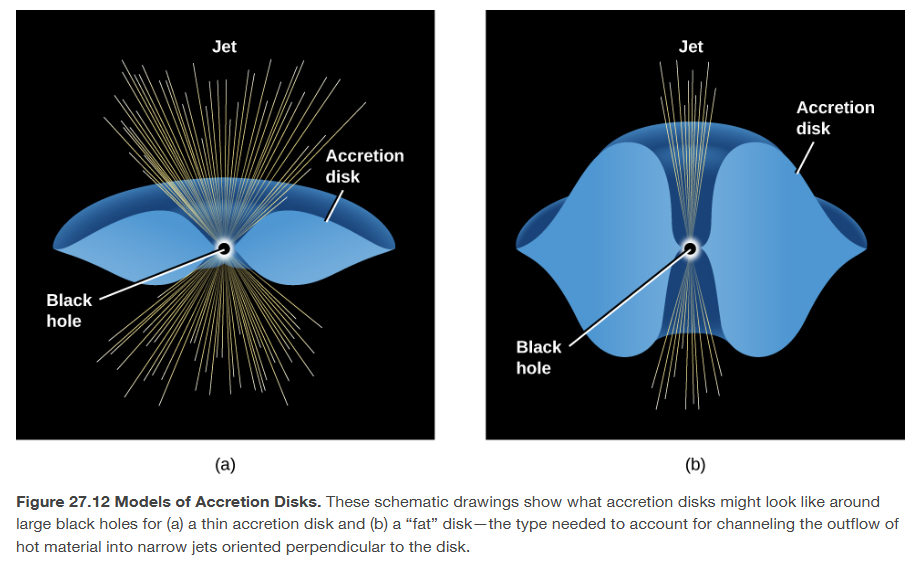chapter 27.1 quasars & 27.2 supermassive black holes; what quasars really are
1/4
There's no tags or description
Looks like no tags are added yet.
Name | Mastery | Learn | Test | Matching | Spaced |
|---|
No study sessions yet.
5 Terms
quasar
first observed with large redshifts in their spectra, indicating they were receding from us at about 45,000km/s (15% speed of light)
strong source of radio emission, bright in infrared and x-ray bands
not in our own galaxy
look like stars because they are very compact and very far away
over a million quasars have been discovered
all show redshifts, same redshift as their galaxies
located at the centre if galaxies (both spiral and elliptical)
can outshine their galaxies by factors of 10-100, sometimes more
many quasar host galaxies are found to be invovled in a collision with a second galaxy ]
luminosities of 10^14 Suns, 10-100 times the brightness of luminous elliptical galaxies, but their luminosities vary irregularly
active galaxies/active galactic nuclei (AGN)
activity in their nuclei produce enormous amounts of energy in a very small volume of space
quasar facts
Quasars are hugely powerful, emitting more power in radiated light than all the stars in our Galaxy combined.
Quasars are tiny, about the size of our solar system (to astronomers, that is really small!).
Some quasars are observed to be shooting out pairs of straight jets at close to the speed of light, in a tight beam, to distances far beyond the galaxies they live in. These jets are themselves powerful sources of radio and gamma-ray radiation.
Because quasars put out so much power from such a small region, they can’t be powered by nuclear fusion the way stars are; they must use some process that is far more efficient.
That means they must have been able to form in the first billion years or so after the universe began to expand.
production of energy for a quasar
if a black hole at the centre of a galaxy with 10^9 Sun’s worth of mass inside accretes around 10Msun per year, then it can produce as much energy as a thousand normal galaxies
this is enough to account for the total energy of a quasar
if the mass of the black hole is smaller than a billion solar masses or the accretion rate is low, then the amount of energy emitted can be much smaller, as it is in the case of the Milky Way
how does matter escape the neighbourhood of a black hole?
it is easier for the matter to escape if it escapes perpendicular to the disk
if the disk is thick, it can channel the outrushing material into narrow beams perpendicular to the disk

